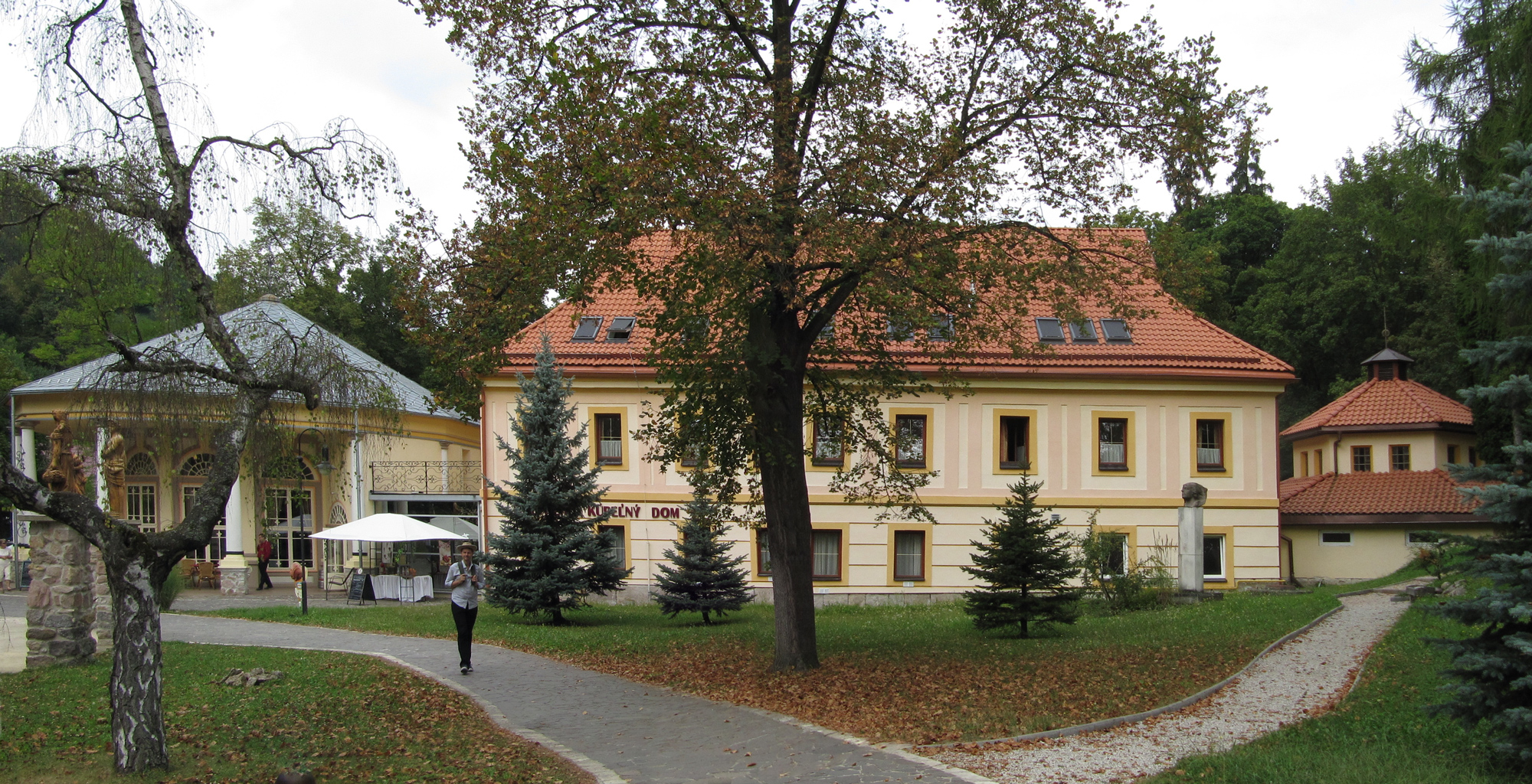Sklené Teplice
Sklené Teplice ( until 1927 slovak also " Sklenô "; German glassworks [n ], older even Glaserhey / Glaserhay, Hungarian Szklenófürdó - to 1907 Barsszklenó - until 1892 only Szklenó ) is a municipality and health resort in Okres Žiar nad Hronom within the Banskobystrický kraj in Slovakia.
Geography
Sklené Teplice is situated in the mountains by the brook Selmec Teplá, a left tributary of the Hron and is about 13 kilometers from Banská Štiavnica ( Schemnitz ) and 15 kilometers away from Žiar nad Hronom.
History
The village was first mentioned in 1340 as Topliche. In the resort had the Abbey of Hronský Beňadik a curia and mill, while the place was owned by the estate of Castle Sasov. In the 14th century he was a lumberjack settlement where inhabitants the wood supplied the mines of Schemnitz. 1350 here a glassworks was established to produce chemical glass to the discovery of gold and silver content in the mined ore. This glassworks was probably set in the 17th century. After a hut for the separation of gold and silver was founded by the ores, however, was eliminated at the end of the 18th century. With the removal of the hut, the population oriented towards agriculture and used since the 16th century spas. The site was also known by the work of Ignaz von Born, who contributed significantly to the preparation of the first international scientific congress in 1786. Here also the world's first scientific society of Mining Engineering ( " Societät of Mining Engineering " 1786-91 ) was founded the same year.
Until 1918, the place was in the county perch within the Kingdom of Hungary and came afterwards to the newly formed Czechoslovakia.
Spa
Ever since the emergence of the community, the thermal springs are used by the local population. A greater awareness received the place but only in the 16th century and the first chemical analysis of the alkaline thermal water ( 37-52 ° C) took place in the 18th century. 1868, the bathroom was acquired by the family Altsohler Gasparetz and it remained in their possession before it was expropriated by the Beneš decrees by the Czechoslovak State.
The bathroom also contains a natural cave steam bath, where musculoskeletal and nervous diseases are treated.
Attractions
- Classical church of St. Luke from 1811
- Classical building complex for the spas from the years 1835-1848
- Ruins of Pustý hrad ( " Desert Castle " ), also called Teplica, above the village of










